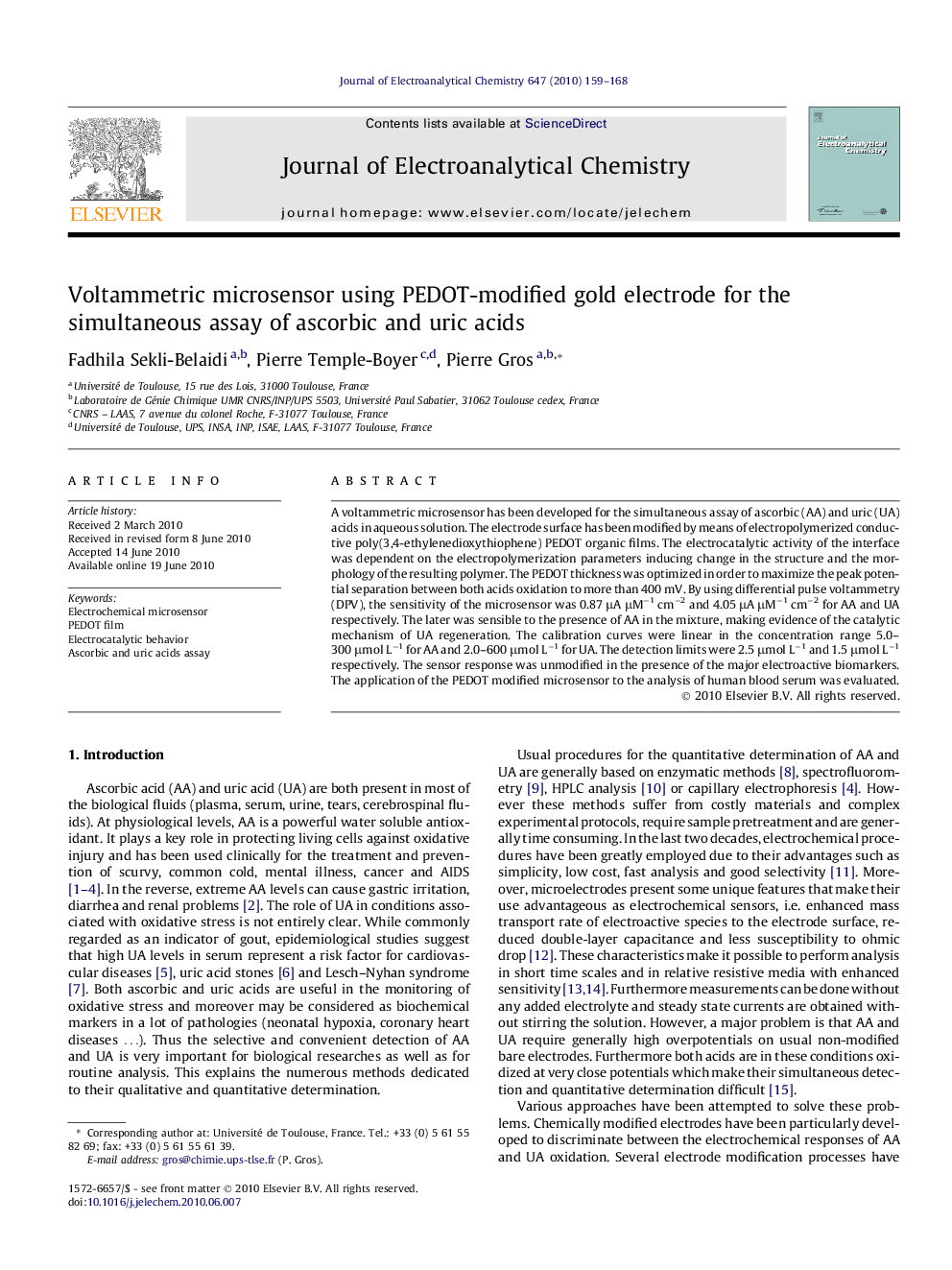| Article ID | Journal | Published Year | Pages | File Type |
|---|---|---|---|---|
| 219921 | Journal of Electroanalytical Chemistry | 2010 | 10 Pages |
A voltammetric microsensor has been developed for the simultaneous assay of ascorbic (AA) and uric (UA) acids in aqueous solution. The electrode surface has been modified by means of electropolymerized conductive poly(3,4-ethylenedioxythiophene) PEDOT organic films. The electrocatalytic activity of the interface was dependent on the electropolymerization parameters inducing change in the structure and the morphology of the resulting polymer. The PEDOT thickness was optimized in order to maximize the peak potential separation between both acids oxidation to more than 400 mV. By using differential pulse voltammetry (DPV), the sensitivity of the microsensor was 0.87 μA μM−1 cm−2 and 4.05 μA μM−1 cm−2 for AA and UA respectively. The later was sensible to the presence of AA in the mixture, making evidence of the catalytic mechanism of UA regeneration. The calibration curves were linear in the concentration range 5.0–300 μmol L−1 for AA and 2.0–600 μmol L−1 for UA. The detection limits were 2.5 μmol L−1 and 1.5 μmol L−1 respectively. The sensor response was unmodified in the presence of the major electroactive biomarkers. The application of the PEDOT modified microsensor to the analysis of human blood serum was evaluated.
